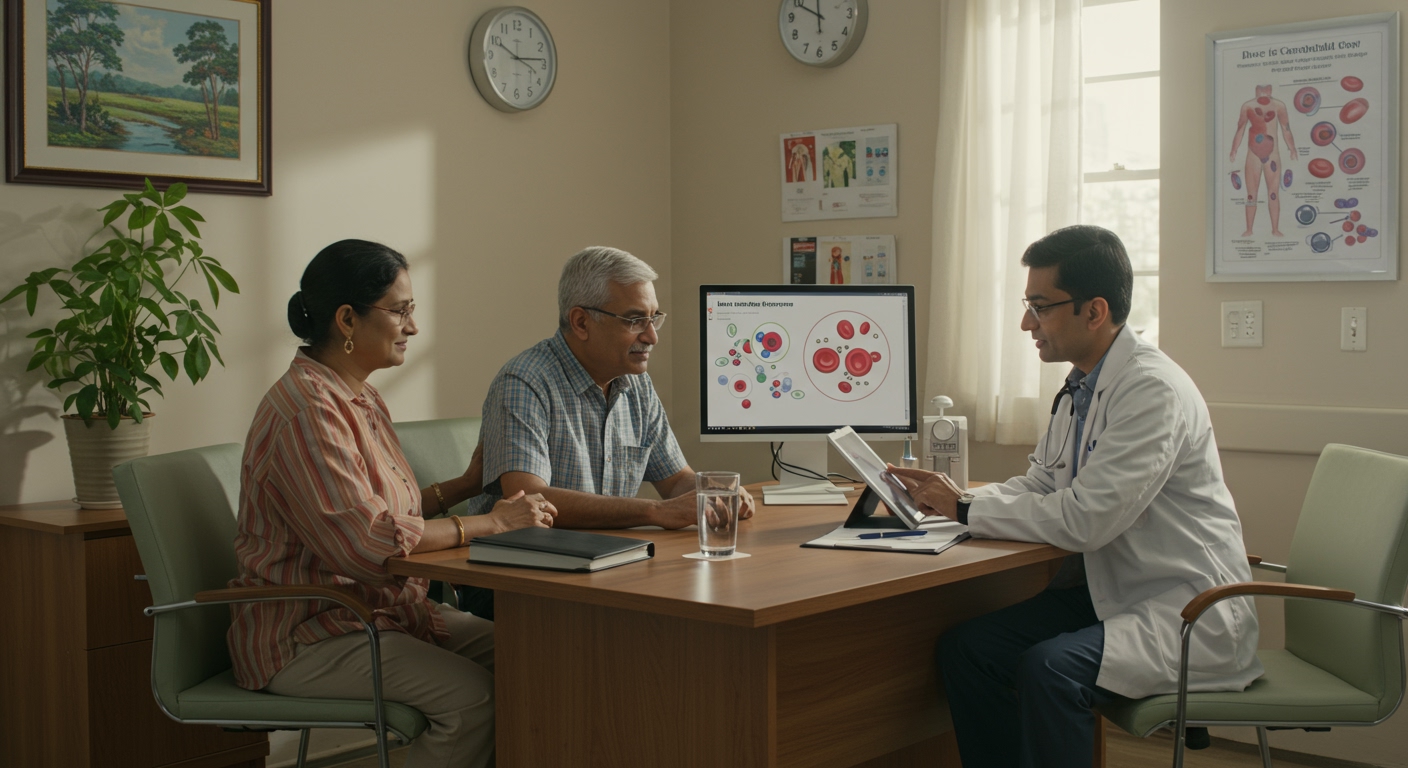Introduction to Acute Myeloid Leukemia (AML)
Acute Myeloid Leukemia (AML) is a type of cancer that starts in the blood and bone marrow. It affects the cells that help form white blood cells. Because AML grows quickly, early detection is important. Many people want to know about Acute Myeloid Leukemia symptoms, diagnosis, and treatment options. This guide will help you understand AML in simple terms.
Symptoms of AML
AML symptoms can appear suddenly. However, some signs may be mild at first. Knowing the symptoms can help you seek care sooner. Common Acute Myeloid Leukemia symptoms include:Feeling very tired or weakFrequent infectionsFever or night sweatsEasy bruising or bleedingPale skinShortness of breathBone or joint painLoss of appetite or weight
Sometimes, these symptoms can be caused by other illnesses. Still, it is important to talk to a doctor if you notice them.
Causes and Risk Factors
Doctors do not always know what causes AML. Yet, some factors can raise your risk. For example, certain changes in your genes may play a role. Other risk factors include:Older age (most cases are in adults over 60)Previous cancer treatment with chemotherapy or radiationExposure to chemicals like benzeneSmoking tobaccoHaving certain blood disordersFamily history of blood cancers
Even with these risks, many people with AML have no clear cause. Therefore, regular check-ups are helpful, especially if you have risk factors.
Diagnosis of AML
Doctors use several tests to diagnose AML. First, they may ask about your symptoms and medical history. Next, they will do a physical exam. Common steps in AML diagnosis include:Blood tests to check for abnormal cellsBone marrow biopsy to look for leukemia cellsGenetic tests to find changes in your cellsImaging tests, such as X-rays, if needed
Early AML diagnosis can help start treatment sooner. Always share any new symptoms with your doctor.
Treatment Options
Treatment for AML depends on your age, health, and the type of leukemia cells. Most people need treatment right away. Common AML treatment options include:Chemotherapy to kill cancer cellsTargeted therapy to block cancer growthStem cell transplant to replace unhealthy bone marrowSupportive care, such as antibiotics and blood transfusions
Sometimes, doctors use a mix of these treatments. Your care team will explain the best plan for you.
Living with AML: Lifestyle and Support
Living with AML can be hard, but support is available. After treatment, you may need regular check-ups. In addition, healthy habits can help you feel better. For example:Eat a balanced diet with fruits and vegetablesGet enough rest and sleepWash your hands often to avoid infectionsTalk to friends, family, or support groupsStay active as much as you can
Remember, you are not alone. Many people find comfort in talking to others with AML.
Prevention and Outlook
There is no sure way to prevent AML. However, you can lower your risk by avoiding tobacco and harmful chemicals. Also, regular health check-ups can help spot problems early. The outlook for AML depends on many factors, such as your age and how well you respond to treatment. New treatments are helping more people live longer. Still, it is important to follow your doctor’s advice and keep up with care.
References
World Health Organization (WHO): Leukemia FactsCenters for Disease Control and Prevention (CDC): Leukemia InformationNational Cancer Institute: Adult Acute Myeloid Leukemia Treatment (PDQ)
For personalized advice on Acute Myeloid Leukemia (AML), consult a hematology specialist.
